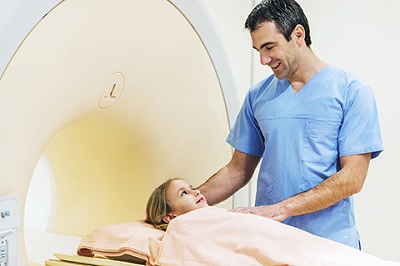
“Children who fail developmental screening tests need further thorough medical evaluation,” explains Dr. Muhannad Daana, Hadassah Medical Organization Pediatric Neurologist and Child Development Specialist. At the same time, he notes that “parents of these children need intensive social and community support.”
Dr. Daana, also Director of the Clalit Child Development Center in East Jerusalem, advocates for a comprehensive, community-based approach to diagnosing children who have “Global Developmental Delay” (GDD), characterized by significant delay in two or more developmental domains. The approach includes neuroimaging, such as Magnetic Resonance Imaging (MRI), as well as metabolic investigations. Genetic testing will reveal influential DNA abnormalities, including missing genes or a rearrangement of certain chromosomes.
A subset of developmental disabilities, GDD encompasses delays in gross and fine motor skills, speech/language, cognition, social/personal skills, and activities of daily living. This category is typically reserved for children under the age of five years; for older children, the term, “intellectual disability” is applied since these children can be given IQ values.
Dr. Daana, who diagnoses and treats children referred to Clalit health care services, the main center for child development disorders in East Jerusalem, derives his diagnosis from taking a thorough history of the child and his family, detailed clinical examination, as well as imaging and laboratory DNA studies. Under Dr. Daana’s direction, Clalit is providing multidisciplinary child development diagnostic services to about 54,000 children of Arabic origin in East Jerusalem.
Dr. Daana reports that the precise prevalence of global developmental delay is unknown, but estimates of one to three percent of children younger than five years of age are reasonable, given also the prevalence of mental retardation (intellectual disability) in the general population. Dr. Daana has focused on the importance of differentiating between static and progressive developmental disabilities as the latter necessitates much more detailed neurometabolic and genetic investigations, especially for the treatable diseases. Any loss of previously attained developmental milestones is a red flag to start the whole cascade of investigations.
While Dr. Daana does not believe there is sufficient evidence to warrant giving an EEG to all children with GDD (unless they are epileptic), he explains that neuroimaging is an important diagnostic tool. CAT scans, he says, contribute to determining the cause of global developmental delay in approximately 30 percent of children, with the number increasing if the child shows physical symptoms, such as abnormally small head size or weakness in a limb.
MRI, he says, “is more sensitive than CT, with abnormalities found in 48.6 to 65.5 percent of children with global delay.” Here, too, the chance of detecting an abnormality increases when the child shows physical symptoms.
Dr. Daana brings out that there are a number of characteristics that will make it more likely that the cause of the child’s GDD will be revealed: female child, history of abnormalities before or right after birth; small head and/or other physical deformities; abnormal neurological examination; and absence of autistic features.
Whatever the diagnostic tools, the goal is to pinpoint the cause of the developmental delays, predict the child’s prognosis, and to craft and refine the most suitable treatment options. At the same time, knowing more specifically what the child’s genetic abnormality is and what he will probably be facing as he grows, will enable the physician to provide crucial, targeted support to the parents.
